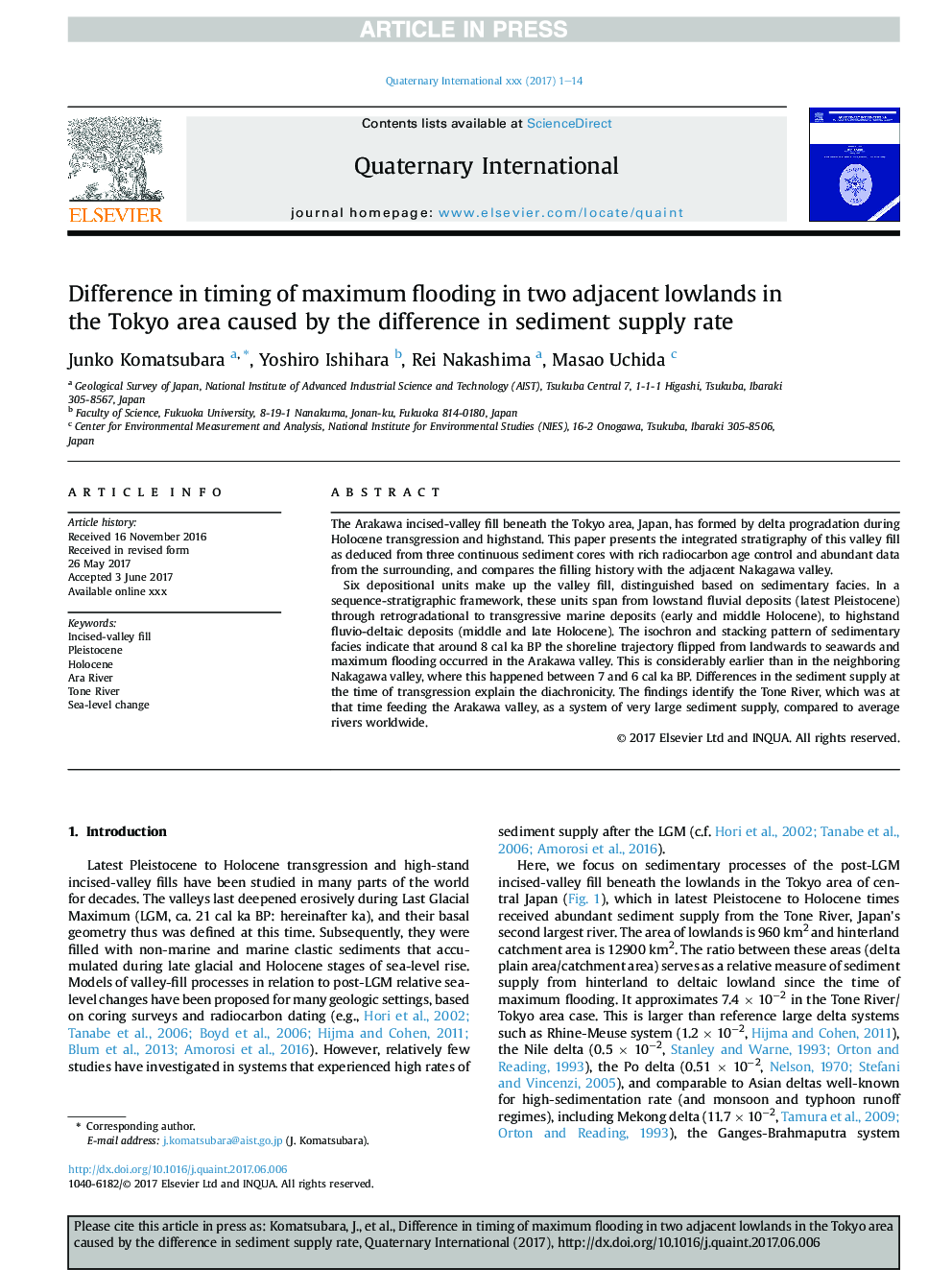| Article ID | Journal | Published Year | Pages | File Type |
|---|---|---|---|---|
| 5112966 | Quaternary International | 2017 | 14 Pages |
Abstract
Six depositional units make up the valley fill, distinguished based on sedimentary facies. In a sequence-stratigraphic framework, these units span from lowstand fluvial deposits (latest Pleistocene) through retrogradational to transgressive marine deposits (early and middle Holocene), to highstand fluvio-deltaic deposits (middle and late Holocene). The isochron and stacking pattern of sedimentary facies indicate that around 8Â cal ka BP the shoreline trajectory flipped from landwards to seawards and maximum flooding occurred in the Arakawa valley. This is considerably earlier than in the neighboring Nakagawa valley, where this happened between 7 and 6Â cal ka BP. Differences in the sediment supply at the time of transgression explain the diachronicity. The findings identify the Tone River, which was at that time feeding the Arakawa valley, as a system of very large sediment supply, compared to average rivers worldwide.
Related Topics
Physical Sciences and Engineering
Earth and Planetary Sciences
Geology
Authors
Junko Komatsubara, Yoshiro Ishihara, Rei Nakashima, Masao Uchida,
